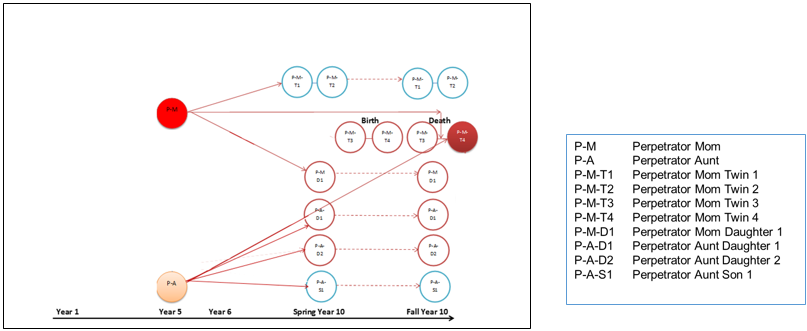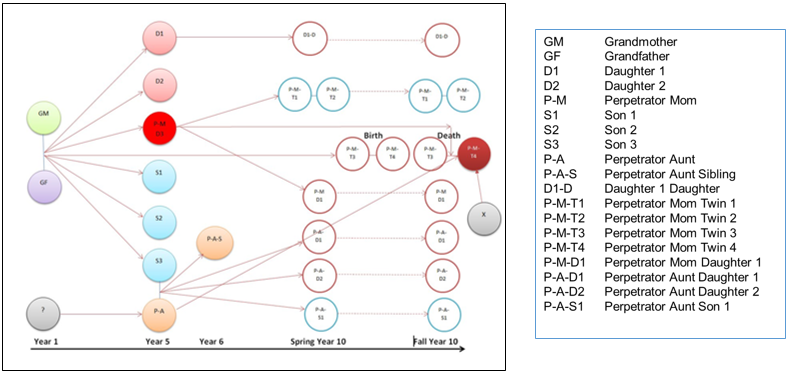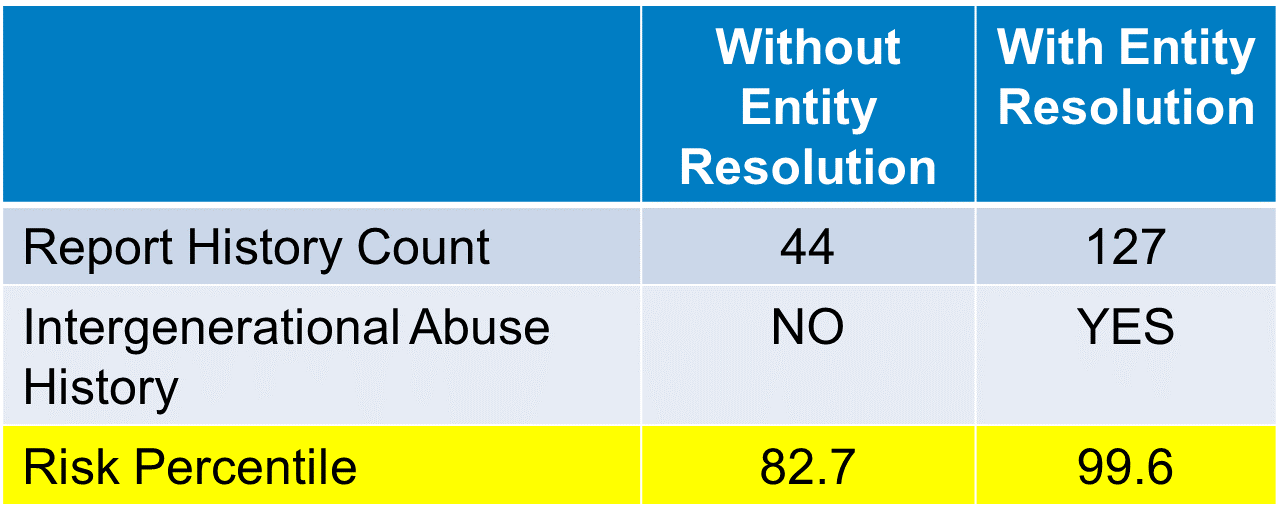When protecting children, “entity resolution” can reduce the things agencies don’t know they don’t know. It’s a technological capability I wish I’d had when I led a child protective services agency.
I have been involved in hundreds of determinations that would alter a child’s life trajectory. I was comfortable with that heavy responsibility as I believed I was making the “most informed” decision possible, with all of the information we had available to us. Some of you may feel the same way I did.
We now have the ability to improve our “most informed” decision, and it starts with data quality. Many child welfare leaders acknowledge that data quality is an ongoing issue and make efforts to de-duplicate and merge files at a surface level. This is a start, but we can do much better.
Learning from recent analytic work by SAS in child welfare systems, we know that the #1 predictor of future maltreatment, including fatality, is a child’s generational abuse history. We also know that case management systems have a robust amount of case history, but data quality limits the ability to surface all historical information needed to help workers make the most informed child safety decision possible. Currently, “they don’t know what they don’t know”.
Enter “entity resolution”, which not only de-duplicates and merges (inch deep and a mile wide approach), but also uses link analysis to gain a clearer picture of relationships between children and adults at different levels. Data scientists from the SAS Advanced Analytics Lab for State and Local Government have identified that the network of these relationships plays a critical role in identifying high-risk children.
Entity resolution will enable decision makers to connect all of the dots and allow them to save lives by doing the following 2 things:
Create unique person ID’s or Key Identification (KID) to using ALL possible data available. There is a high likelihood that an initial inspection of the data would reveal individuals in a case management system assigned to multiple person IDs. We want one ID per person.
Allow for a better understanding of the relationships between a child and others in the child’s event history. This provides information on potential risk factors by looking at 3 layers of relationships.
- Previous reports and intakes for a selected child
- Previous reports and intakes for those in the same cases as the selected child
- Previous reports and intakes for those linked to the cases of the selected child but not including the selected child.
Child tragedy reveals widespread family abuse
Below is a real life case study demonstrating the impact and added value of entity resolution and the critical information that it provides the worker and/or supervisor. The first diagram shows the available case history (without entity resolution) of a case resulting in the fatality of a young 4-month-old child where the mother (P-M) & aunt (P-A) were both perpetrators of the fatality of a twin (P-M T4). The death was alleged to be due to neglect and inadequate supervision, and the cause of the death reported was Sudden Unexpected Infant Death.

Following entity resolution across social networks, the following history became available demonstrating historic generational abuse going back to the child’s grandparents over a 10-year history:

What’s important, and distressing, to understand is that each of the solid arrows represent at least one allegation of abuse by that person of the individual at the end of the arrow. For instance, at the time of the twin’s fatality, there were additional open cases that included the grandfather (GF), five siblings of the mother (D1, D2, S1-S3), a child of one other aunt (D1-D), and three children of the perpetrator aunt (P-A-D1, P-A-D2, P-A-S1) who was married to one of the uncles (S3). All of the children in the investigation were listed as alleged maltreatment victims in the fatality report.
The deceased child did not have an earlier maltreatment allegation report. However, there were two earlier reports in the spring of year 10 in which the mother (P-M) was listed as a perpetrator and her older three children (P-M-T1, P-M-T2, P-M-D1) as victims. In addition, the grandmother (GM) and the aunt (P-A) were listed as perpetrators and children of the aunt (P-A-D1, P-A-D2, P-A-S1) as victims in these reports. The child of the other aunt (D1-D) was also a victim. Meanwhile, the perpetrator aunt (P-A) was a victim of maltreatment perpetrated by her parents who are not found in the child welfare system (“?”).
Tracking these families back to years 1 to 5, there were several counts of alleged maltreatment involving multiple members of these families. The grandmother (GM) and grandfather (GF) were listed as perpetrators several times maltreating their six (6) children, including the perpetrator mother (P-M). Therefore, the mother (P-M) appeared as a victim earlier in her life. Similarly, the perpetrator aunt (P-A) was abused multiple times together with her sibling (P-A-S) by her family between years 1 and 5. Therefore, both the aunt (P-A) and her husband (S3) were abused in the past and they eventually became perpetrators to their own children.
After counting all roles, at the time of the fatality event, total number of report histories for the deceased child was 127. There were also two perpetrators as victims (mother and the aunt) and many counts of intergenerational maltreatment. As explained earlier, SAS research has found that intergenerational abuse is the heavily weighted risk factor. Report histories and perpetrator-as-victim count were the two strongest predictors in the early-fatality model, which would have been applicable to the deceased child.
Entity resolution gives clearer view of risk
Without entity resolution across the levels of relationships, the above information currently cannot be provided to workers and supervisors making life and death decisions. This type of solution has a massive impact on risk scoring and should be seen as foundational for any child welfare organization that is exploring or currently operationalizing predictive analytic risk scoring.
Let me demonstrate why this is so critical using the case study above. Without entity resolution, the case above would not have been identified as having intergenerational abuse history and would have scored in the 82.7 risk percentile. With entity resolution the above case identifies intergenerational abuse and increases the risk score of this specific case dramatically, allowing workers to understand the true scope of the youth’s history as seen below:

Like I said, workers and supervisors may not know what they don’t know. But that doesn’t have to be the case. With entity resolution, child welfare agencies can ensure they have all relevant history on individuals in their case management system so they can make the most informed “most informed” decision they’ve ever made.

